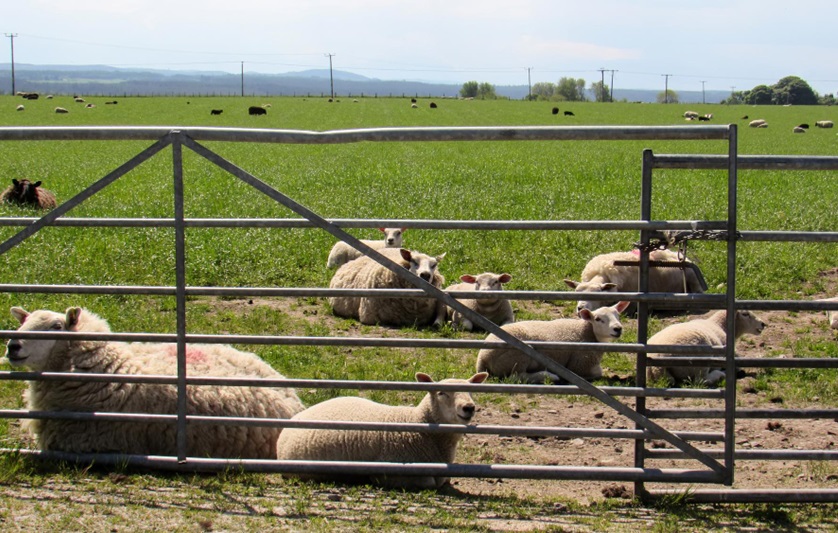 When it comes to constructing a durable and reliable fence, the materials you select matter just as much as the design. With a plethora of options available, finding the perfect fit can be a challenge. However, one solution stands out for its resilience, cost-effectiveness, and versatility. This choice can not only meet a variety of fencing needs but also contribute to environmental sustainability by giving materials a second life. We are talking about used oilfield pipe, a hidden gem in the world of fencing materials.
When it comes to constructing a durable and reliable fence, the materials you select matter just as much as the design. With a plethora of options available, finding the perfect fit can be a challenge. However, one solution stands out for its resilience, cost-effectiveness, and versatility. This choice can not only meet a variety of fencing needs but also contribute to environmental sustainability by giving materials a second life. We are talking about used oilfield pipe, a hidden gem in the world of fencing materials.
Comparing Fresh and Seasoned Options
Brand New or Gently Aged
The decision between brand-new pipes and gently aged options is crucial. New pipes offer the advantage of being untouched and potentially more uniform. However, they come with a higher price tag and lack the sustainable appeal of repurposed materials.
The Charm of Used Oilfield Pipe
Used oilfield pipe presents a unique combination of durability and cost-efficiency. Originally designed to withstand the harsh conditions of oil extraction, this pipe brings unmatched toughness to fencing projects. Its previous life in the oilfields ensures that it can handle anything your livestock or property can throw at it. Plus, opting for used oilfield pipe contributes to reducing waste and promoting recycling—an eco-friendly choice for the environmentally conscious.
Understanding the Nuances of Used Oilfield Pipe
At first glance, used oilfield pipe might appear as an economical and readily available alternative to new piping, often presenting a facade that rivals the pristine condition of its newer counterparts. However, a closer examination unveils a different story. Signs of degradation such as rust, holes, pitting, and flaking become evident, showcasing the wear and tear endured over time.
When lifted, the disparity in weight between a segment of used oilfield pipe and a new one is noticeable. The lighter feel of the used pipe hints at its history of extensive use in oilfields, where it was deemed unsuitable for further industrial use. Predominantly sourced from stripper wells across Oklahoma, Kansas, and Texas, these pipes have facilitated the transportation of vast quantities of salt water and acid, integral to oil extraction processes. The interior of these pipes bears the brunt of constant friction from sucker rods, progressively thinning the walls and compromising the pipe’s integrity. Despite their outward appearance, this history suggests that used oilfield pipes may have diminished wall thickness, reflecting their extensive wear.
Evaluating Pipe Quality: Prime, Secondary, and Reject
Top-Tier Choices
Prime pipes are the cream of the crop, boasting impeccable quality and condition. They are ideal for applications requiring the highest standards of safety and aesthetics.
Second-Hand Success
Secondary or second pipes strike a balance between quality and price. They may bear minor imperfections but still offer robust performance for most fencing projects. This category is where efficiently used oilfield pipe often shines, providing a resilient material that has proven its worth in demanding conditions.
Rejects: Beyond the Surface
Reject pipes, despite their name, can be a wise choice for specific uses. They might not pass the strictest quality controls but can serve well in less critical applications. This tier offers the highest savings, making it an attractive option for budget-conscious projects.
Securing fencing pipe at competitive rates often means looking toward the secondary market, where ‘seconds’ and ‘rejects’—terms denoting materials that didn’t meet the original manufacturing specifications—offer an appealing balance of quality and cost. However, these materials present a challenge in availability. Their market entry typically results from manufacturing discrepancies, such as incorrect size specifications, making them a rare find. The demand for popular pipe sizes further complicates this issue. For example, while many in the agricultural sector prefer pipes around 2-½ inches in diameter, the secondary market more frequently offers sizes slightly off this mark, such as 2-3/8 inches or 2-¼ inches. Despite these variations, these alternatives often suffice for fencing purposes.
The thickness of the pipe wall emerges as another critical consideration in selecting fencing materials, influencing both cost and functionality. Opting for pipes with insufficient wall thickness in an attempt to reduce expenses can prove to be a costly error, especially in applications requiring robust strength, like cattle fencing. Therefore, the wisdom lies in consulting with a seasoned supplier familiar with the nuances of used oilfield pipe. Such expertise ensures accurate advice on the appropriate wall thickness for different uses, ensuring that the chosen pipe fulfills its intended role effectively.
Secure Your Fencing with Quality Materials
When it comes to building a durable, cost-effective fence, selecting the right materials is crucial. At International Pipe, we specialize in providing top-quality used oilfield pipe that meets a variety of fencing needs. Our extensive inventory and knowledgeable team ensure that you find the perfect size and thickness for your project without compromising on strength or budget. Contact us today to make your fencing project a success with materials that stand the test of time.
